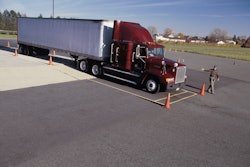The Supreme Court voted 6-3 Thursday that it will not allow the Occupational Safety and Health Administration’s COVID-19 vaccine-or-test Emergency Temporary Standard (ETS) to be enforced. Supreme Court Justices Stephen G. Breyer, Sonia Sotomayor and Elena Kagen dissented in the Jan. 13 opinion.
The ETS required workers at companies with 100 or more employees to either be fully vaccinated or tested for COVID at least weekly.
The Supreme Court, in its opinion, said the Secretary of Labor lacked the authority to issue such a mandate, even through the OSH Act’s emergency temporary standard exemption.
“The Secretary has ordered 84 million Americans to either obtain a COVID-19 vaccine or undergo weekly medical testing at their own expense,” the Court said in its opinion. “This is no ‘everyday exercise of federal power.’ It is instead a significant encroachment into the lives – and health – of a vast number of employees.”
SCOTUS added that the OSH Act, which established OSHA in 1970, empowers the Secretary of Labor “to set workplace safety standards, not broad public health measures.”
The dissenting Justices argued that OSHA did what Congress mandated it to do – “It took action to address COVID-19's continuing threat” in the workplace, adding that the ETS falls within the agency’s mission, which is “to ‘protect employees’ from ‘grave danger’ that comes from ‘new hazards’ or exposure to harmful agents,” the dissenting Justices wrote.
“Yet today the Court issues a stay that prevents the Standard from taking effect,” the dissenting Justices added. “In our view, the Court’s order seriously misapplies the applicable legal standards. And in so doing, it stymies the federal government’s ability to counter the unparalleled threat that COVID-19 poses to our nation’s workers. Acting outside of its competence and without legal basis, the Court displaces the judgments of the government officials given the responsibility to respond to workplace health emergencies. We respectfully dissent.”
The American Trucking Associations, which was among the first groups to file a lawsuit in the Fifth Circuit Court, lauded the Supreme Court’s decision Thursday.
“Today, ATA has won a tremendous victory on behalf of the trucking industry and workers and employers everywhere,” said ATA President and CEO Chris Spear. “Today’s ruling by the Supreme Court validates our claim that OSHA far overstepped its authority in issuing an emergency temporary standard that would interfere with individuals’ private health care decisions. Trucking has been on the front lines throughout the pandemic – delivering PPE, medical supplies, food, clothing, fuel, and even the vaccines themselves. Thanks to this ruling, our industry will continue to deliver critical goods, as our nation recovers from the pandemic and we move our economy forward.”
Similarly, the Truckload Carriers Association was pleased with the Justices' majority opinion.
"We applaud the Court for moving quickly on this ruling as the deadline for compliance with the ETS was expected to go into effect earlier this week," said TCA Vice President of Government Affairs David Heller. "It is imperative that the professional truck driver has the ability to safely, efficiently, and effectively deliver our nation’s freight so that our economy and this nation can continue to thrive."
Just before the Supreme Court’s ruling this week, OSHA had already amended its FAQ to clarify that the majority of truck drivers would not be covered by the mandate.
In the new section posted in the FAQ, OSHA clarified that while there is no specific exemption for truck drivers, the ETS does “not apply to employees ’who do not report to a workplace where other individuals such as coworkers or customers are present’ or employees ‘who work exclusively outdoors.’”
The FAQ goes on to say that truck drivers who do not work in a team operation with another driver in the cab and who only encounter other individuals in outdoor environments are not included in the ETS.
Additionally, OSHA noted that minimal use of indoor facilities where other people may be present, such as using a multi-stall bathroom or entering an administrative office to drop off paperwork “does not preclude an employee from being covered by these exemptions, as long as time spent indoors is brief.”











